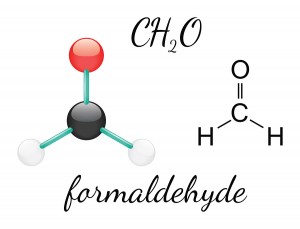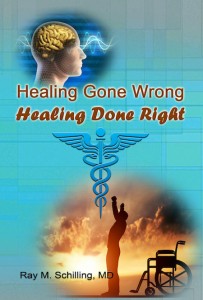For the past few years it has become evident that sun exposure helps many symptoms. Patients with psoriasis have skin plaques on their skin. With sun exposure some of them disappear and the skin appearance improves. Patients with seasonal affective disorder have worsening of their depression over winter. Depression lifts with more sun exposure in the spring. Even a complicated disease like MS, which is more common in the northern latitudes, improves with sun exposure or a move to the southern states.
Osteoporosis: sun exposure has a positive effect
Osteoporosis was the subject of an April 2016 study from Argentina.
The researchers counted the amount of actinic keratosis lesions on the skin of subjects. This correlated well with lifetime sun exposure. Next they measured the occurrence of hip fractures from osteoporosis. There was a correlation of the two. This case control study had 51 patients with hip fractures. Controls were 59 patients from the same hospital without hip fractures. The mean age was 80 years of age. 23.5% of patients with a history of hip fractures were observed to have actinic keratoses. In contrast 40.7 % of actinic keratoses were found in controls.
Sun exposure prevents hip fractures
The authors conclude that higher sun exposure is protective of hip fractures, but led to more actinic keratoses. They also stated that higher actinic keratoses rates, which are precancerous skin lesions are a risk for developing skin cancer. It is important to balance risk of osteoporosis from a lack of sun exposure with the risk of skin cancer from overexposure to the sun.
We know that higher doses of vitamin D3 in combination with vitamin K2 and calcium supplementation prevent osteoporosis. Reasonable daily doses are 5,000 to 10,000 IU of vitamin D3 per day, 200 micrograms of vitamin K2 per day and 500mg of calcium daily.
Psoriasis: sun exposure helps many symptoms
Psoriasis is an inflammatory condition of the skin with plaques and a characteristic skin rash. This February 2016 study from Turkey showed significant differences between women with psoriasis versus controls. Bone density studies showed lower levels in psoriatic females than in female controls. Female psoriasis patients had lower vitamin D levels than female controls. Male psoriatic patients showed no difference from controls. Low levels of vitamin D3 may be triggers for osteoporosis to develop in female psoriasis patients. Inflammation may also be a contributory factor. There was an elevation of the C-reactive protein (CRP) in female psoriasis patients.
Clinical observations have shown for years that the rash of psoriasis patients tends to improve during the summer.
Seasonal affective disorder: sun exposure lifts the mood
Seasonal affective disorder (SAD) has been known to respond to light therapy. Typically it peaks in the winter months and presents in mostly females who live far away from the equator. They improve when they travel to a sunny spot such as the subtropics or the southern states of North America during the winter months. But light therapy, vitamin D3, antidepressant therapy and counseling the mood swings of seasonal affective disorder will lessen.
In this 2014 study it was shown that depression in older people was not related to the darker months (between October and March). The summer depression rates in older people were identical to the winter depression rates.
Clinical trials with seasonal affective disorder (SAD) patients
In a group of 38 patients with SAD 14 patients were treated with white light visors, 15 with infrared visors and 9 served as a control (visors, no light). Both white light and infrared treated groups showed prevention of SAD while the control group developed SAD.
A 6-week trial was published March 2015. It involved 78 patients (51 Afro-Americans and 27 Caucasians). They all had SAD and received a treatment with 10,000-lux bright light for 60 min daily in the morning. Caucasians had a response rate of 75%. African-Americans had a response rate of only 46.3%. The investigators found that the symptomatic improvement and the rate of treatment response were the same in both groups. The researchers found that the Afro-American subgroup of patients required more education resources. This can overcome the inconsistent application with the bright light.
Vitamin D trials regarding SAD patients
In a study involving 185 female undergraduates of the Pacific Northwest, vitamin D blood levels were measured and a correlation of low vitamin D with depressive symptoms was found in SAD patients.
In a small study the hypothesis was tested that vitamin D3 in higher doses would be beneficial for SAD patients. Eight subjects received a treatment with 100,000 I.U. of vitamin D3, while seven subjects received phototherapy. All subjects had their vitamin D blood levels checked. Interestingly the vitamin D3 group improved on all depression scales. The phototherapy did not show improvement on the depression scale. The vitamin D level increased 74% in the vitamin D3 group and 36% in the phototherapy group.
Light exposure and vitamin D supplementation for SAD
All of these studies seem to indicate that SAD is more common in a younger population while in older people depression seems to be year-round. SAD does respond very well to 1-hour exposure of 10,000 lux of light in the morning. On a sunny day a walk in the sun for 1 hour is equivalent to an exposure at home with a SAD light. High dose vitamin D3 supplementation makes sense as low vitamin D levels were a persistent finding among SAD depression patients.
Multiple sclerosis: sun exposure makes a difference
Multiple sclerosis (MS) is more common in northern latitudes of the northern hemisphere. It is thought that sun exposure leads to higher vitamin D3 production in the skin, which prevents MS. On the other hand, once the diagnosis of MS is certain sun exposure or high doses of vitamin D3 can make it better.
This 2015 Australian study showed the same findings with a large group of MS patients.
This 2015 study from Sweden indicates that there is a compelling connection of prevention of MS through sun exposure or the taking of supplements of vitamin D3. In view of this evidence the authors suggest that you should take vitamin D3 supplements for prevention of MS before trials confirm this further.
Sun protection needed to prevent skin cancer
We have been hearing the slogan “slip, slop and slap” for skin cancer prevention. Slip, slop and slap stands for: slip on a shirt; slop on the sunscreen and slap on a hat. This publication dated March 2016 questions whether the precautions have been too zealous.
On the other hand the statistics regarding higher precancerous actinic keratoses in patients without osteoporosis are alarming too. It seems better to use high doses of vitamin D3, which will prevent osteoporosis, depression (SAD), MS and also improve psoriasis. Sun protection has decreased skin cancer, but did not curtail melanoma rates because sunscreen lotion can be penetrated by infrared radiation.
Use common sense for skin cancer prevention
This means that you should listen to the advice to stay out of the intense sun between 11AM and 3PM. Use vitamin D3 supplements in higher doses as this protects your skin. Research from England indicates that melanoma patients are usually the ones that are susceptible to melanoma genetically. They also have low vitamin D levels in the blood to a certain degree from skin cancer formation. The researchers recommend strongly that those at risk for melanoma need to be on higher vitamin D3 supplementations. A patient with a diagnosis of melanoma should receive high doses of vitamin D3.
Conclusion
It is not a myth: sun exposure helps many symptoms as explained above. Diverse body systems like osteoporotic bones, psoriatic skin and seasonal affective disorder respond to sun exposure. Sun exposure also prevents MS, a degenerative central nervous system disorder. The effects of vitamin D3 can explain some of this effect. It likely stems from sun exposure to the skin. But sunlight has hormonal effects. This occurs through the optic pathways and connections to the hypothalamus. We know that the sun helps combat many symptoms, but more research will be necessary, till we know exactly how it works.















